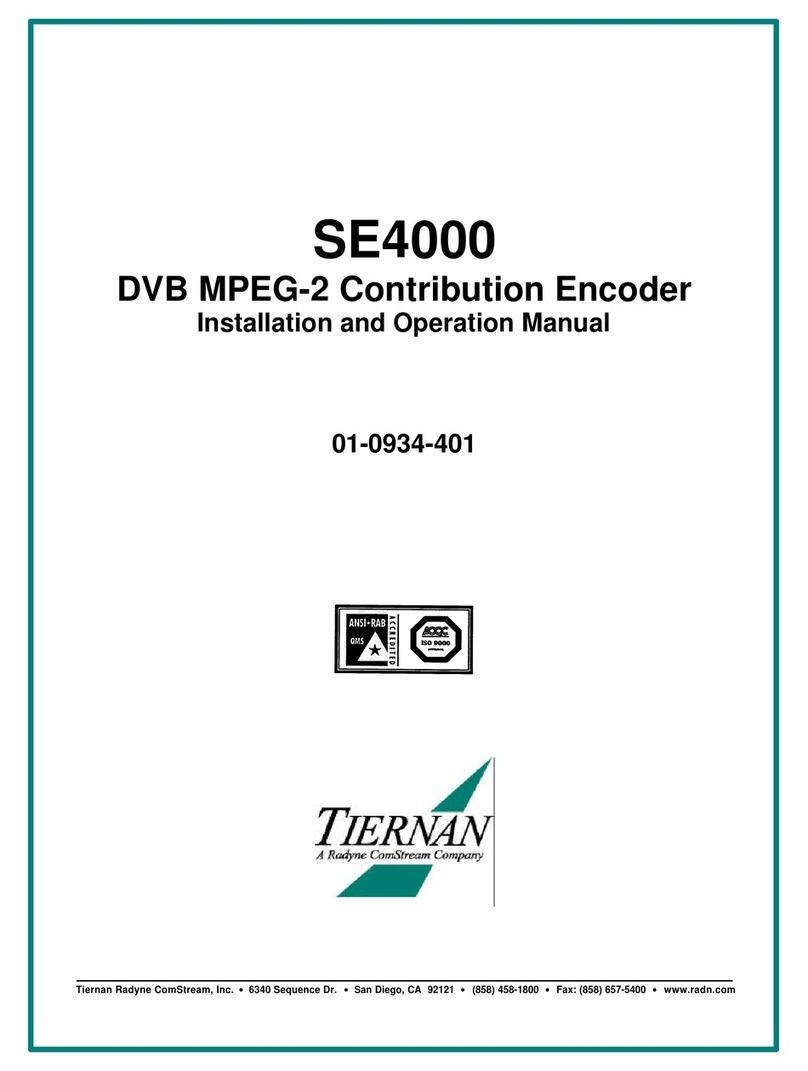
SFC6400A/SFC1450A Synthesized Frequency Upconverter Warranty Policy
TM106 –Rev. 1.1 iii
Warranty Policy
Radyne ComStream Corporation (Seller) warrants the items manufactured and sold by Radyne
ComStream Corporation to be free of defects in material and workmanship for a period of two (2) years
from date of shipment Radyne ComStream Corporation’s obligation under its warranty is limited in
accordance with the periods of time and all other conditions stated in all provisions of this warranty.
This warranty applies only to defects in material and workmanship in products manufactured by Radyne
ComStream Corporation. Radyne ComStream Corporation makes no warranty whatsoever concerning
products or accessories not of its manufacture. Repair, or at Radyne ComStream Corporation’s option,
replacement of the Radyne ComStream Corporation products or defective parts therein shall be the sole
and exclusive remedy for all valid warranty claims.
Warranty Period
The applicable warranty period shall commence on the date of shipment from Radyne ComStream
Corporation’sfacility to the original purchaser and extend for the stated period following the date of
shipment. Upon beginning of the applicable Radyne ComStream Corporation warranty period, all
customers’ remedies shall be governed by the terms stated or referenced in this warranty. In-warranty
repaired or replacement products or parts are warranted only for the remaining portion of the original
warranty period applicable to the repaired or replaced products or parts. Repair or replacement of
products or parts under warranty does not extend the original warranty period.
Warranty Coverage Limitations
The following are expressly not coveredunder warranty:
1. Any loss, damage and/or malfunction relating in any way to shipping, storage, accident, abuse,
alteration, misuse, neglect, failure to use products under normal operating conditions, failure to
use products according to any operating instructions provided by Radyne ComStream
Corporation, lack of routine care and maintenance as indicated in any operating maintenance
instructions, or failure to use or take any proper precautions under the circumstances.
2. Products, items, parts, accessories, subassemblies, or components which are expendable in
normal use or are of limited life, such as but not limited to, bulbs, fuses, lamps, glassware, etc.
Radyne ComStream Corporation reserves the right to revise the foregoing list of what is covered
under this warranty.
Warranty Replacement and Adjustment
Radyne ComStream Corporation will not make warranty adjustments for failures of products or parts,
which occur after the specified maximum adjustment period. Unless otherwise agreed, failure shall be
deemed to have occurred no more than seven (7) working days before the first date on which Radyne
ComStream Corporation receives a notice of failure. Under no circumstances shall any warranty exceed
the period stated above unless expressly agreed to in writing by Radyne ComStream Corporation.
Liability Limitations
This warranty is expressly in lieu of and excludes all other express and implied warranties, Including
but not limited to warranties of merchantability and of fitness for particular purpose, use, or
applications, and all other obligations or liabilities on the part of Radyne ComStream Corporation,
unless such other warranties, obligations, or liabilities are expressly agreed to in writing by Radyne
ComStream Corporation.




























